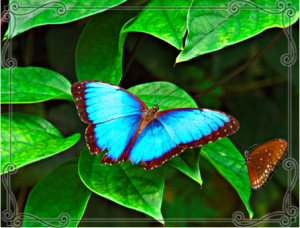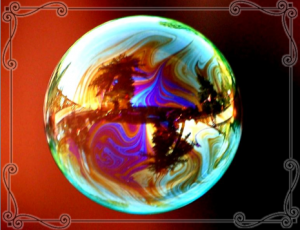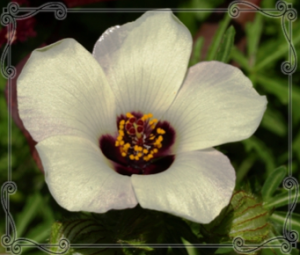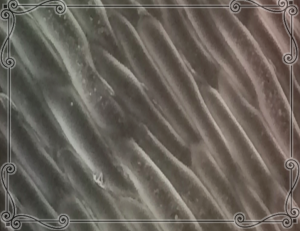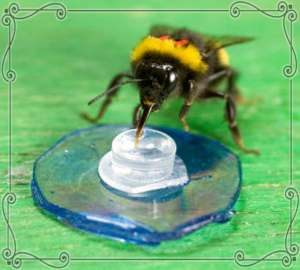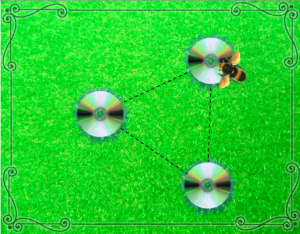Iridescent wings of a Morpho butterfly
Creatures like the Morpho butterfly on the leaf above appear to be covered in shimmering blue and green metallic colors. This phenomenon is called "iridescence," meaning that color appears to change as the angle changes, much like soap bubbles and sea shells.
In animals, the physical mechanisms and function of structural color have been studied significantly as a signal for recognition or mate choice.
On the other hand, Beverley Glover believes that such shimmering in plants can actually influence animal behavior by attracting pollinators better than their non-iridescent counterparts. Glover,Director of Cambridge University Botanic Garden, presented her study during the Biology Seminar Series in the French Family Science Center on Monday earlier this week.
The metallic property of flowers like the Hibiscus Trionum above are generated by diffraction grating – similar to the way CD shines – to create color from transparent material.
In order to observe the effects of the iridescence on pollinators like bees, Glover created artificial materials with a surface structure of nanoscale ridges, similar to the microscopic view of a petal's epidermal surface below.
In the first set of experiments, Glover and her team marked bees with paint to follow their behavior as they set the insects to explore iridescent flowers. Some were covered in a red grating – containing a sweet solution as a reward – and others with a blue iridescent grating – containing a sour solution as deterrent. The experiment demonstrated that the bees were able to detect the iridescent signal produced by the petal's nanoridges, and – as a result – correctly identified the rewarding flowers.
Iridescent behavior of a soap bubble
With the evidence that the bees were able to see iridescence, Glover set out for the second experiment: once the bees find a specific type of flower, how long does it take them to find the same flower in a different location? Using the triangular arrangement of shimmering surfaces as shown below, Glover observed that iridescence produced by a diffraction grating leads to significant increase in foraging speed as compared to non-iridescent flowers.
While iridescence in plants is difficult to spot by a casual stroll through the garden, pollinators such as bees definitely can see it, and scientists have recently realized that insect vision and flower colors have co-evolved.
In order to ensure that pollen is transferred between flowers of the same species, these flowers have developed a unique structure of iridescence. As scientists work on understanding which plants produce these beautiful colors and how the nanoscale structure is passed down through reproduction, we can only look at our gardens in wonder at the vast amount of nature that still remains to be explored and learned.
-
Hibiscus Trionum
-
Nanoscale ridges on a petal’s epidermal surface.
-
Bees pollinating iridescent “flowers”
-
Triangular formation of iridescent disks used for experimentation on bees
Provided by Duke University
